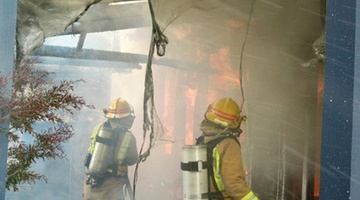In this video clip, Associate Professor Charley Fleischmann from the University of Canterbury talks about the different materials that contribute to the flammability of furniture.
Points of interest
- What are the issues involved with furniture and fire?
- Which fabrics have better fire resistance1? Why do they?
Transcript
ASSOCIATE PROFESSOR CHARLEY FLEISCHMANN
When we talk about the flammability of furniture, there’s a number of issues involved. Furniture nowadays has a fabric over the top, and then underneath that fabric is a padding. In today's furniture, that is a foam – primarily polyurethane2 foam. It’s a very good material, it’s inexpensive, it has very good durability characteristics. Unfortunately, it burns very well, it ignites easily and has an awful lot of energy stored within it, and so the foam is one of the primary problems within furniture.
We take that foam, the padding, and we cover it with a fabric, and that fabric can be anywhere from a synthetic3 material – meaning its origins are from oil, where it’s made of things like polyester and polypropylene – or it could be a natural fibre. Typically the natural fibres, the cotton and wool, have better fire resistance. That’s because, when they burn, they leave behind a charred material, just like wood, and that charred layer helps to shield the foam underneath and so it reduces or slows down the burning.
With a synthetic material, they typically melt and burn themselves, burn very well, often. And so when you ignite4 them, they quickly melt out of the way. The foam becomes involved as does the fabric, and it can burn very, very quickly.
Typically, it’s on a wooden frame but by the time that wood gets involved, most of the foam is gone. When you burn a piece of furniture, once you get rid of the foam and the fabric, you are left behind with this almost charred wooden skeleton that stays there and burns for a much longer period of time, but it’s much slower in its burning.
Acknowledgements:
C.Goodwin
Liz Hall
New Zealand Fire Service


